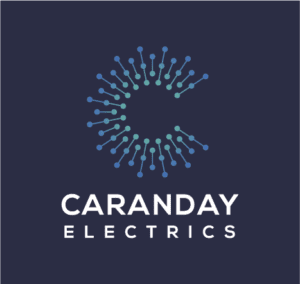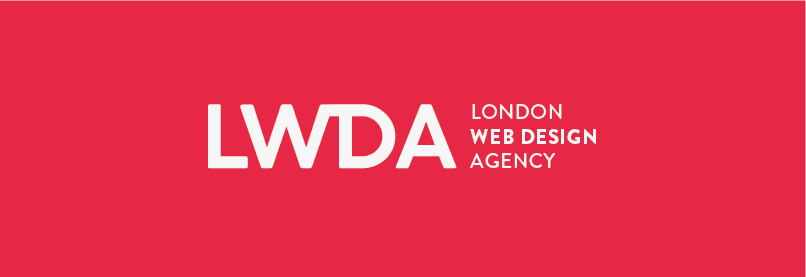
Article
What is the best image format to use for my website?
PUBLISHED:November 25, 2019
UPDATED:February 13, 2024
In the digital realm, the choice of image format for your website plays a pivotal role in both aesthetics and performance. Should you go with JPG, PNG, GIF, or SVG? Let's delve into this crucial decision-making process to ensure your website shines bright in the online landscape.
Exploring Current Web Image Formats
Understanding the nuances of each image format is essential for optimising your website’s visual content. Here’s a breakdown of the main image formats widely used in web design and development today:
1. JPG/JPEG (Joint Photograph Expert Group)
JPEG (Joint Photographic Experts Group) stands out as one of the most common image formats, renowned for its efficient compression of photographic images while maintaining acceptable visual quality. Its lossy compression algorithm strikes a delicate balance between file size and image fidelity.
JPEG’s strength lies in its high compression efficiency, making it ideal for displaying photographic content on websites. By discarding some image data during compression, the JPEG format achieves smaller file sizes without significant perceptible loss in quality, ensuring fast loading times and optimised performance.
With broad browser compatibility across different platforms and devices, JPEG images render reliably, ensuring consistent display and accessibility for website visitors. This universality makes the JPG format a reliable choice for websites aiming to reach a diverse audience across various environments.
JPEG is a raster image format, best utilized for photographic images requiring high-resolution displays, such as product photos, event snapshots, or portrait photography. Its compression algorithm excels in preserving visual detail and colour accuracy, making it suitable for images with smooth colour gradients or intricate details. JPEG is also the best format for large background images and photographic textures where high image compression does not detract from the visual impact.
In essence, JPEG offers an efficient solution for optimizing photographic content on websites, enhancing user experience and performance. By strategically incorporating JPEG images, web developers can achieve a balance between image quality and file size, ultimately delivering a visually appealing and responsive website to their audience.
 |
 |
| JPEG: 5kb (Smooth) | GIF: 14kb (Looking Patchy/Pixelated) |
2. GIF (Graphical Interchange Format)
GIF stands for Graphics Interchange Format and was developed by Compuserve in 1987. The creators intended it to be pronounced with a soft “g” like in “gym” however the internet decided to go with a hard g as in “golf”.
While GIF images never had the quality of the earlier JPG format when it came to photos, GIFs had 2 superpowers for the early web:
- You could utilise them to create simple animations
- You could implement transparent backgrounds (leading to a less boxy-looking website design)
With lightweight file sizes and widespread support across all modern web browsers such as Google Chrome and Microsoft’s Internet Explorer, GIFs ensure compatibility and consistent display across devices, enhancing user experience.
Like JPEG, WebP and PNG, GIF is a raster format, meaning that it is pixel-based, unlike vector formats such as SVG (see further down).
The GIF format has been going through a bit of a renaissance recently, with sites like Giphy inspiring meme creators worldwide, plus the latest trend Cinemagraphs.
Top Tip: GIFs can be compressed using EZgif.
3. PNG (Portable Network Graphic)
Portable Network Graphics (PNG) emerged as the go-to choice for web graphics since being awarded its ISO/IEC 15948 standard in 2004, offering a unique blend of versatility and visual integrity. The PNG file format’s standout features include lossless compression, transparency support, broad browser compatibility, and lossless editing capabilities.
With their lossless compression, PNG files maintain image quality while keeping file sizes compact, making them ideal for graphics, logos, and illustrations requiring crispness and clarity. Moreover, PNG’s alpha channel transparency support allows for seamless integration of images with various backgrounds, enhancing design flexibility.
PNG’s compatibility across different web browsers and platforms ensures consistent rendering and accessibility for users across all devices. This broad compatibility guarantees that PNG images display reliably, regardless of the viewing environment.
Additionally, PNG’s ability to retain original quality even after multiple edits makes it a preferred choice for graphics requiring frequent modifications or updates. This feature is particularly advantageous for images like screenshots, digital artwork, and graphics with text overlays.
In practice, the PNG format is the best choice for graphics requiring a transparent background, as well as detailed illustrations where image clarity is paramount. Its lossless compression and compatibility make PNG a versatile solution for various web graphics despite the relatively large file size when compared to JPEG, contributing to enhanced visual appeal and user experience on websites.
However, if you are looking for transparency within logos and icons, then you should consider using the SVG file format…
4. SVG (Scalable Vector Graphics)
Scalable Vector Graphics (SVG) stand out as a versatile image format, prized for their scalability, compactness, and interactivity. Unlike raster images (pixel-based), SVGs are vector image files that maintain crispness and detail regardless of size, ensuring consistent visual quality across devices. Their small file size contributes to faster page loading times, optimising user experience and search engine rankings.
SVGs offer increased creativity for web designers, supporting interactive elements and animations through CSS and JavaScript. This flexibility makes them ideal for dynamic features like interactive infographics and animated icons, enhancing user engagement and comprehension.
In terms of accessibility, SVGs shine, being readable by screen readers and assistive technologies. Search engines can also index SVG content, potentially boosting SEO visibility and keyword optimization.
Strategically, SVGs find their place in various website components as follows:
- Logos and icons benefit from SVG’s scalability and sharpness across screen sizes.
- Infographics and data visualizations leverage SVGs for clarity and interactivity.
- Animations and interactive elements add flair and engagement to web design.
- Responsive design ensures SVGs adapt seamlessly to different devices and resolutions.
 |
|
| PNG: 29kb | SVG: 12kb |
In essence, SVG images empower websites with their scalability, performance optimization, interactivity, and accessibility. Integrating vector images into your website can enhance visual appeal, user experience, and search engine performance, driving success in the competitive digital landscape.
Top Tip: SVGs can be compressed using Vecta.io, but we tend to use the original vector illustration tool for this, such as Adobe Illustrator.
5. WebP (Web Picture Format)
WebP, developed by Google, is a cutting-edge image format designed to revolutionize web performance and visual quality. Offering superior compression efficiency, WebP significantly reduces file sizes compared to traditional formats like JPG and PNG, leading to faster page load times. Its versatility extends to both lossless and lossy compression modes, catering to a wide range of image types without compromising quality.
One of WebP’s standout features is its support for transparency and animation, akin to PNG and GIF formats. This capability allows for the creation of lightweight yet visually stunning images and animations, enhancing the overall user experience. Moreover, WebP enjoys broad compatibility with modern web browsers, including Google Chrome, Mozilla Firefox, and Microsoft Edge, ensuring seamless integration across platforms.
Implementing WebP on your website offers several benefits. Firstly, it improves performance by delivering a smaller file size, thereby enhancing page load speed—a crucial factor in user engagement and SEO ranking. Secondly, WebP is ideal for high-resolution images, transparent graphics, and animations, making it a versatile choice for various web design elements. Finally, its support for transparency and animation adds a layer of interactivity and visual appeal to your website content.
In summary, WebP emerges as a game-changer in the realm of web optimization, offering a perfect blend of compression efficiency, visual fidelity, and browser compatibility. By leveraging WebP images, web developers can elevate their websites’ performance, user experience, and search engine visibility, ensuring they stand out in the competitive online landscape.
While WebP is widely supported by modern web browsers, including Google Chrome, Mozilla Firefox, and Microsoft Edge, it’s essential to consider fallback options for browsers that do not yet support the format. Fortunately, you can implement strategies such as server-side detection and conversion to ensure compatibility across a wide range of browsers.
Top Tip: To achieve the best level of compression for WebP, PNG and JPEG image formats, we suggest running your files through tinypng.com after you have exported them from your image editing application.
6. AV1/AVIF
AV1/AVIF, developed by the Alliance for Open Media, is a groundbreaking image format promising unparalleled compression efficiency and visual quality. More recent than WebP, this new format offers several key advantages for website optimization:
- Enhanced Compression Efficiency: AV1/AVIF employs advanced compression algorithms, resulting in significantly smaller file sizes compared to traditional formats like JPEG and PNG. This leads to faster loading times and improved website performance, especially on bandwidth-constrained networks or mobile devices.
- High-Quality Visuals: Despite smaller file sizes, AV1/AVIF maintains exceptional visual quality, preserving intricate details and colour accuracy. It’s ideal for displaying high-resolution images, photographs, and graphics without sacrificing clarity or sharpness.
- Support for Advanced Features: AV1/AVIF supports advanced features such as transparency, HDR, and wide colour gamut, enabling the creation of visually stunning and immersive web content. This versatility enhances the overall user experience and allows for the implementation of cutting-edge design elements.
AV1/AVIF represents a significant advancement in image compression technology, offering superior compression efficiency, high-quality visuals, and support for advanced features. However, the format is so new that support is restricted to only the most recent version of modern web browsers. But stay tuned, because the AVIF format is sure to make gains in the future.
Optimizing Images for Enhanced SEO
Optimizing images for websites plays a pivotal role in improving website performance and enhancing search engine optimization (SEO). By ensuring images are properly optimized, several key benefits can be achieved:
- Faster Page Load Speed: Optimized images result in smaller file sizes, leading to faster page load times. This enhances user experience, reduces bounce rates, and improves overall website performance.
- Enhanced User Experience: High-quality, optimized images contribute to a visually appealing and user-friendly website. Clear and relevant visuals engage users, increase time spent on the site, and encourage further exploration.
- Mobile-Friendliness: Optimized images ensure that websites load quickly and display correctly on various devices and screen sizes, enhancing mobile responsiveness and accessibility.
- Image Search Optimization: Search engines consider image optimization when ranking websites in image search results. Optimizing image filenames, alt tags, and descriptions with relevant keywords improves visibility and drives organic traffic.
- Reduced Bandwidth Usage: Optimized images consume less bandwidth, benefiting users with limited internet connections or data plans. Minimizing bandwidth usage ensures a smoother browsing experience for all users.
Different image formats offer different levels of optimisation, with SVGs being a better choice for logos and icons (small file size) and JPEG, WebP and PNG (raster image file types) being a good choice for photographic content. PNGs result in a larger file size than JPEGs but offer transparency, whilst the increasingly popular WebP image format offers the best optimisation of all the raster image file formats, but is not quite as widely supported by all image editors and web browsers.
In essence, optimizing images for websites is vital for improving website performance, user experience, and SEO. By prioritizing image optimization and ensuring images are properly sized, compressed, and tagged with relevant keywords, website owners can enhance page load speed, engage users effectively, and increase visibility in search engine results.
Conclusion
Choosing the right image format for your website is more than a mere technicality; it’s a strategic decision that influences user experience and SEO performance. Whether it’s the timeless appeal of JPEGs or the versatility of SVGs, understanding the strengths and limitations of each image type empowers you to create visually stunning and highly optimized web content.
Need help optimising your website?
Is your website speed suffering even though you have optimised all of your images? If so, there might be some deeper problems lurking within the code.
We offer website consulting services & audits that help identify issues with your website, including code, UI & UX and SEO. So drop us a line if you have concerns about your website.
Website Image Formats: FAQ
Absolutely! Depending on your content and design requirements, you can utilize a combination of image formats to achieve the desired visual impact and performance optimization.
While WebP offers significant advantages in terms of compression and quality, its adoption may be limited by compatibility issues with certain browsers. However, you can implement fallback strategies to ensure a seamless user experience across all platforms.
Image format indirectly influences SEO by affecting website performance and user engagement. Optimizing images for fast loading times and visual appeal can contribute to higher search engine rankings and improved organic traffic.
There are various online tools and plugins available for converting images to WebP format, including Adobe Photoshop, Squoosh, and online converters like CloudConvert and Convertio.
While there’s no one-size-fits-all answer, JPEG is commonly used for product images on e-commerce websites due to its balance of quality and file size. However, it’s essential to consider individual product requirements and user experience goals when selecting the appropriate format.
Utilize image optimization techniques such as resizing, compression, and lazy loading to strike the right balance between file size and visual quality. Additionally, leverage modern formats like WebP to benefit from advanced compression algorithms and improved performance.




